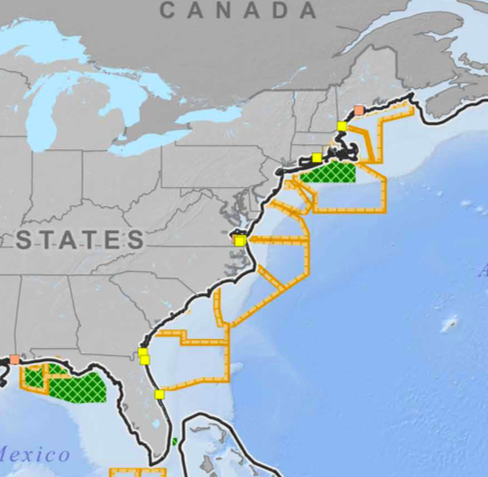
War Games Planned for East Coast and Local Waters
TIM FAULKNER/ecoRI News staff

Live weapons and full sonar will be used in coastal, inland and offshore areas if a proposed Navy war exercise is approved. (Navy images)
The Navy intends to fire missiles, rockets, lasers, grenades and torpedoes, detonate mines and explosive buoys, and use all types of sonar in a series of live war exercises in inland and offshore waters along the East Coast.
In New England, the areas where the weapons and sonar may be deployed encompass the entire coastline, as well as Navy pier-side locations, port transit channels, civilian ports, bays, harbors, airports and inland waterways.
“The Navy must train the way we fight,” according to a promotional video for what is called "Atlantic Fleet Training and Testing Phase III."
An environmental impact study of the war games was released June 30. Public comment is open until Aug. 29. A public hearing is scheduled for July 19 from 4-8 p.m. at Hotel Providence. Comments can be submitted online and in writing, or through a voice recorder at the hearing.
The dates and exact locations of the live weapon and sonar exercises haven't yet been released. In all, 2.6 million square miles of land and sea along the Atlantic Coast and Gulf of Mexico will be part of the aerial and underwater weapons firing.
The Navy describes the weapons exercise as a “major action.” The live ammunition training includes the use of long-range gunnery, mine training, air warfare, amphibious warfare, and anti-submarine warfare. The Navy says weapons use near civilian locations is consistent with training that has been done for decades.
The Navy, in conjunction with the National Marine Fisheries Service, will announce one of three options for the battle exercises by fall 2018. One of the options is a “no-action alternative.”
The Office of the Secretary of the Navy has full authority to approve or deny the live war games. President Trump, however, has had difficulties finding a new Navy secretary. Venture capitalist Richard V. Spencer is expected to face a Senate confirmation hearing this month. Previous nominee Philip Bilden withdrew from consideration in February over financial disclosure requirements.
The Navy says an environmental review for the excises was conducted between 2009 and 2011. The National Oceanic and Atmospheric Administration (NOAA) also prepared an Environmental Impact Statement/Overseas Environmental Impact Statement to analyze the potential environmental effects associated with the use of active sonar technology and the improved extended echo ranging system during Atlantic Fleet training exercises.
The live war games would deploy passive and active sonar systems. The Navy said it will use mid-frequency active acoustic sonar systems to track mines and torpedoes. Air guns, pile driving, transducers, explosive boxes and towed explosive devises may be used offshore and inland.
Risks to sea life include entanglements, vessel strikes, ingesting of harmful materials, hearing loss, physiological stress, and changes in behavior.
The Navy says it is using acoustic modeling done by NOAA to minimize impacts to marine mammals such as whales and porpoises. NOAA, however, isn't involved with efforts to mitigate environmental impacts during the war games. Spotters on naval vessels will search for mammals during the exercises. The Navy said it will partner with the scientific community to lessen impacts on birds, whales, turtles, fish and reefs.
While some sea life is expected to be harmed by the explosives and sonar, the Navy says it doesn't expect to threaten an entire population of a species.
Update: Sen. Jack Reed, a ranking member of the Senate Armed Services Committee, has asked the Navy for clarification on the exercises. Reed stated that there are restrictions in place for these activities but did not offer details on those restrictions. He told ecoRI News that he encourages the Navy to be open and transparent about any training plans that may impact the public.
https://www.ecori.org/narragansett-bay/2017/7/5/war-games-planned-for-east-coast-and-local-waters
